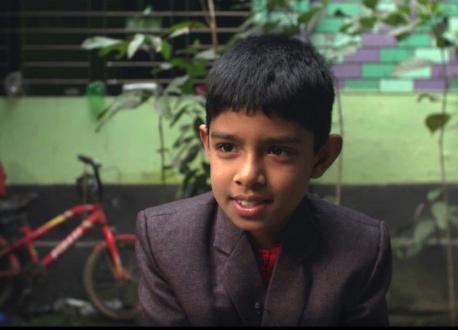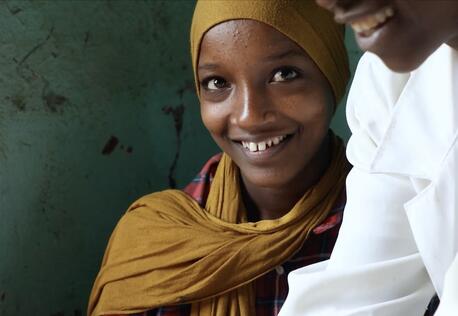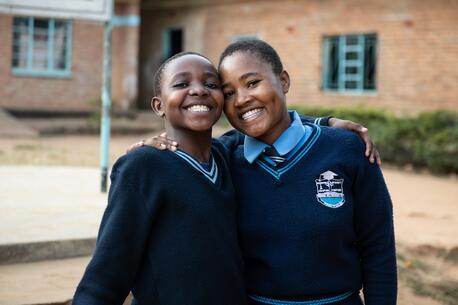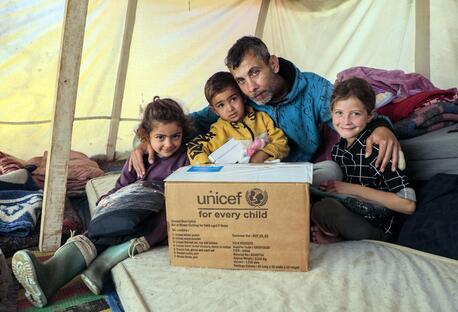
1 in 3 Children Worldwide Have Lead Poisoning
UNICEF and partner Pure Earth report alarming rates of lead poisoning in children and an urgent call to action to strengthen protections.
Lead poisoning is affecting children on a “massive and previously unknown scale,” according to a new report from UNICEF and the nonprofit Pure Earth.
Long recognized as a health hazard, the problem of lead contamination is particularly acute in low- and lower-middle-income countries where safeguards for industrial waste and pollution are weak or poorly enforced.
The report, The Toxic Truth: Children’s exposure to lead pollution undermines a generation of future potential, is the first of its kind. It presents a global analysis of childhood lead exposure by the Institute of Health Metrics Evaluation, verified by a study approved for publication in the journal Environmental Health Perspectives. It features case studies of six places where lead pollution and other toxic heavy metal waste have affected children: Kathgora, Bangladesh; Tbilisi, Georgia; Agbogbloshie, Ghana; Pesarean, on the island of Central Java, Indonesia; Morelos State, Mexico — and Flint, Michigan, U.S.
The report's researchers concluded that one-third of children globally — roughly 800 million children up to age 19 — have a blood lead level at or above 5 micrograms per deciliter (µg/dL), a level that requires action, according to the CDC. Nearly half of the children with elevated levels live in South Asia.

10-year-old Al Amin's job repairing batteries at a garage in Dhaka, Bangladesh, puts him at risk of lead exposure and its ill effects. A new report released by UNICEF and nonprofit group Pure Earth notes that informal and substandard recycling of lead-acid batteries is a leading contributor to lead poisoning in children living in low- and lower-middle-income countries, where vehicle ownership has tripled in the last 20 years. © UNICEF/UNI157477/Kiron
“With few early symptoms, lead silently wreaks havoc on children’s health and development, with possibly fatal consequences," UNICEF Executive Director Henrietta Fore said. “Knowing how widespread lead pollution is — and understanding the destruction it causes to individual lives and communities — must inspire urgent action to protect children once and for all.”
Lead, a chemical element and a heavy metal, is a potent neurotoxin that causes irreparable harm to children’s brains. Lead poisoning occurs when lead builds up in the body, often over months or years.
WHO: even small amounts of lead can cause serious health problems
According to the World Health Organization, there is no level of exposure to lead that is known to be without harmful effects. Even small amounts of lead can cause serious health problems, and at high levels, it can be fatal.
Childhood lead exposure is particularly destructive to babies and children under age 5 — the critical ages for brain development — causing lifelong neurological, cognitive and physical impairment. It has been linked to mental health and behavioral problems, and to an increase of crime and violence.
Older children can suffer severe consequences as well, including an increased risk of kidney damage and cardiovascular disease later in life. The UNICEF/Pure Earth report estimates the economic ripple effects as well: nearly $1 trillion in lost wages and productivity over the lifetimes of affected children.
The main causes for environmental contamination are mining, smelting, manufacturing and poor recycling practices for lead-acid batteries; other sources of exposure include the continued use of leaded water pipes in homes, lead-based paint and leaded gasoline. Parents whose occupations involve working with lead often bring contaminated dust home on their clothes, hair, hands and shoes, inadvertently exposing their children.
Blood lead levels have declined dramatically in most high-income countries since the phase-out of leaded gasoline and most lead-based paints. In the U.S., for example, efforts since the 1970s to reduce lead in paint, gasoline, water, yards and even playgrounds have made marked progress in reducing blood lead levels in children — but that progress has been very uneven, with many neighborhoods and children still at risk for high exposures to lead. The report points to Flint, Michigan as a recent example — but not the worst. An investigation by Reuters found thousands of neighborhoods where poisoning rates were higher and in some cases double those measured during the peak of the city's water crisis.
Lead pollution: one boy's experience
Anik, 8, of Bangladesh, suffered lead poisoning after an informal battery recycling factory opened near his home outside the village of Kathgora, north of Dhaka, in 2016. The factory used a process that involved lead smelting. "There was always black smoke coming from that place," Anik told UNICEF in an on-camera interview.
Every morning, the leaves on the trees would be covered with soot, Anik's mother Sharmin recalled. Her son would play football in the field just outside the factory's tin walls.
The factory shut down after about a year under pressure from villagers. In 2017, Pure Earth worked with the Bangladesh Department of Environment to clean up the site, collecting battery waste and removing contaminated bamboo and topsoil. But Anik still suffers the effects of exposure. He has problems with memory and concentrating on school work. "I forget a lot of things while I'm studying," Anik says.
For other kids in the neighborhood, symptoms include vomiting and frequent headaches. But since the clean up, blood lead levels among the children have decreased.
A call to action to end lead poisoning of children
The UNICEF/Pure Earth report calls for tighter regulations and an end to lead smelting and other practices. It calls on governments in affected countries to take a coordinated approach to building monitoring and reporting systems, and to installing prevention and control measures. New legislation is needed to enforce environmental, health and safety standards for lead-acid battery manufacturing and recycling sites.
“The good news is that lead can be recycled safely without exposing workers, their children and surrounding neighborhoods," said Pure Earth's president Richard Fuller. "Lead-contaminated sites can be remediated and restored.” Communities will be better protected, he added, once people are educated about the dangers and empowered to seek proper protections.
The need for a global standard
The release of The Toxic Truth follows a major push by the WHO to sound the alarm about the issue. Like the WHO, the UNICEF/Pure Earth report advocates for laws, regulations and enforceable standards to reduce the use of lead in manufacturing. The report also advocates for the creation of global standard measurement units to verify the results of pollution intervention on public health, the environment and local economies, and an international registry for sharing data.
UNICEF also announced a new three-year partnership initiative with Pure Earth and the Clarios Foundation, called Protecting Every Child's Potential, to further advance the cause.
Learn more about global lead pollution and its toxic effects on children. Read the full report here.
UNICEF works with partners in over 190 countries and territories to keep children safe and protected. Your support can make a difference.
Top photo: Anik, 8, of Bangladesh suffered the effects of lead exposure. Watch the video featuring his story here. © UNICEF/2020
HOW TO HELP
There are many ways to make a difference
War, famine, poverty, natural disasters — threats to the world's children keep coming. But UNICEF won't stop working to keep children healthy and safe.
UNICEF works in over 190 countries and territories — more places than any other children's organization. UNICEF has the world's largest humanitarian warehouse and, when disaster strikes, can get supplies almost anywhere within 72 hours. Constantly innovating, always advocating for a better world for children, UNICEF works to ensure that every child can grow up healthy, educated, protected and respected.
Would you like to help give all children the opportunity to reach their full potential? There are many ways to get involved.





